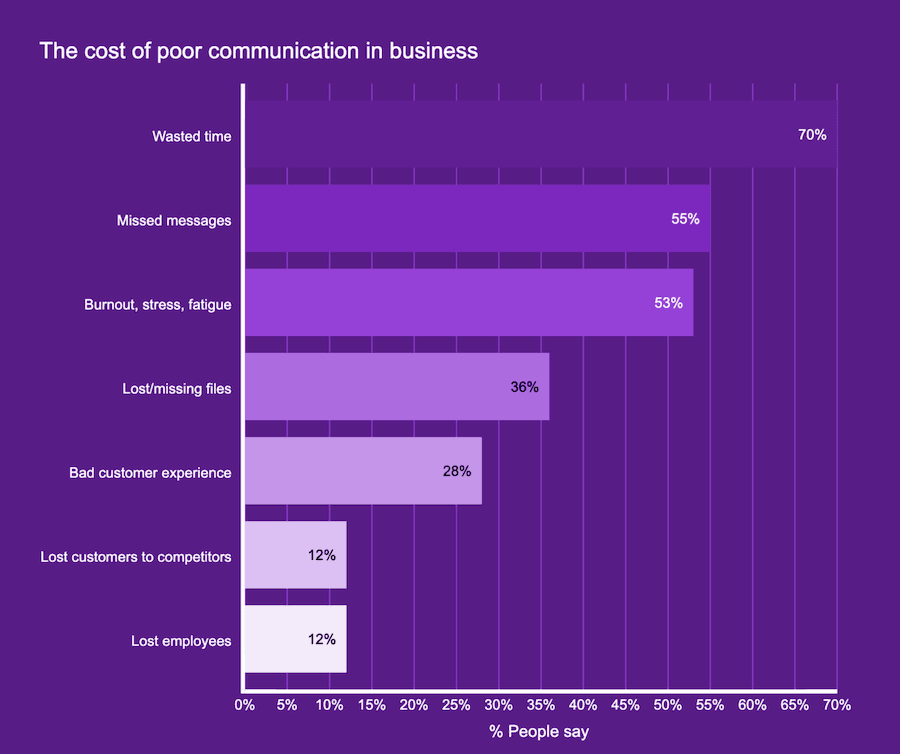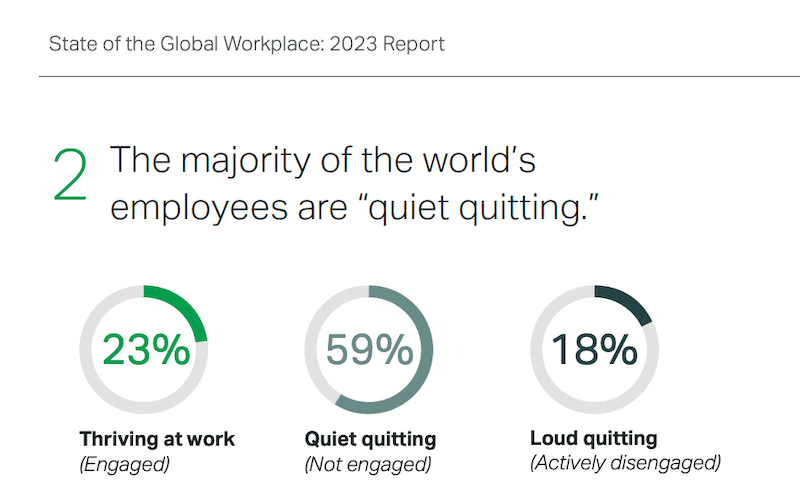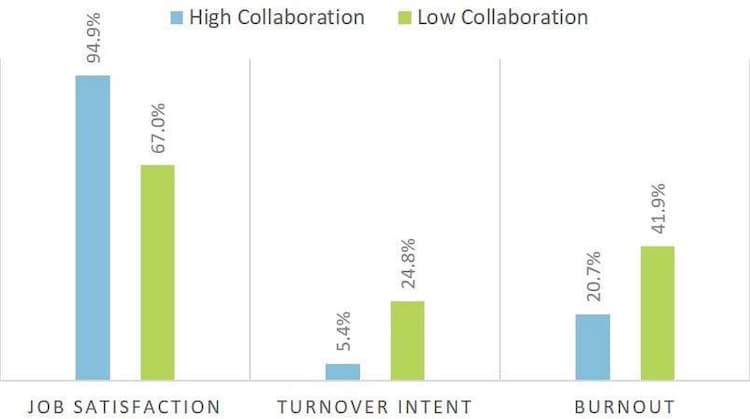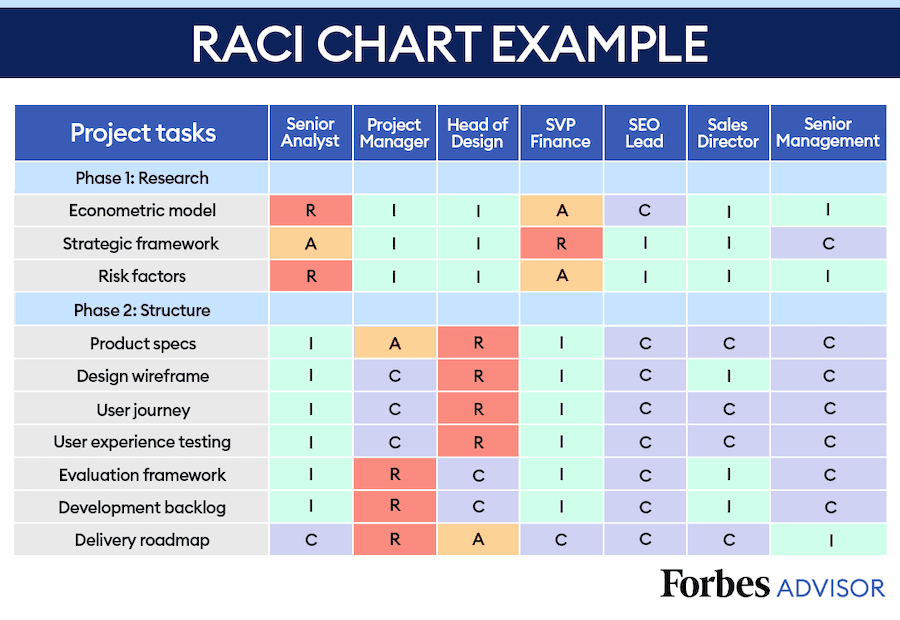Different departments, objectives, and skill sets all converge when you form cross-functional teams. These teams can often accomplish large-scale projects and move the needle further than the single departments or individuals within them.
Cross-functional collaboration isn’t all sunshine and roses, however. Conflicting priorities, missed deadlines, miscommunication, and even lack of trust can hinder your progress. Different time zones can complicate collaboration further if you’re working in a remote setting or on a distributed team.
And it’s not just about getting tasks done and achieving stellar results. Collaborating successfully in a cross-functional team also involves ensuring everyone feels comfortable, heard, and valued when sharing their opinions and unique perspectives.
But how do you create a productive, healthy environment when your team spans different departments, time zones, and continents?
Read on to learn more about the common myths about cross-functional collaboration, its benefits, and the best practices for maximizing its potential.
Why is it important to debunk collaboration misconceptions?
Left unchecked, a team’s misconceptions about each other’s roles and responsibilities can create an environment where people work in silos, duplicate efforts, and miss out on the innovation that happens when diverse minds come together.
Why does it matter? Let’s look at some facts:
Wasted time due to poor communication: According to the 2024 Communication Statistics report, poor communication results in wasted time. Seventy percent of respondents claim they lost valuable time due to communication issues in their business.
Missed opportunities: The same report revealed that 55% of people missed messages due to miscommunication in their workspace.

The quiet quitting crisis: According to the 2023 Gallup State of the Global Workplace report, nearly 60% of the world’s employees are “quiet quitting,” meaning they have psychologically disengaged from work despite being physically present. This highlights the importance of ensuring employees feel heard and empowered to drive higher engagement and performance.

By debunking collaboration myths, you’re not just setting the record straight. You’re alleviating the problems that come with miscommunication or insufficient communication. This, in turn, leads to a culture of trust, transparency, and shared purpose.
Myth 1: Communication in cross-functional teams
Myth: Effective communication in cross-functional teams is easy and happens naturally.
Truth: Communication in cross-functional teams requires deliberate effort and the right tools and strategies to overcome challenges.
If you’re familiar with the game of telephone, you know how quickly messages can get distorted.
Now imagine what happens when people from various departments, each with their own jargon, priorities, and communication styles, begin working together. It’s likely to result in misunderstandings, missed deadlines, and frustration.
Remember the 1999 Mars Climate Orbiter fiasco?
NASA lost a $125 million spacecraft in 1999 because one team used metric units while another used imperial measurements. What now appears to have been a small communication misstep resulted in disastrous consequences.
The risks of miscommunication are also high in remote and hybrid workspaces. A simple misinterpretation of a Slack message or a missed Zoom call can delay or completely derail a project.
How will you bridge this communication gap and ensure everyone is on the same page? You can use asynchronous video messaging tools like Loom.
Imagine your marketing head walking through the new marketing plan, using cursor movements and screen annotations for proper context. That’s Loom in action. This approach provides context and clarity and leaves no room for misunderstandings.
For example, Loom’s own design team creates Loom videos to get answers and give detailed feedback and instructions to their engineering team:
Myth 2: Leadership and decision-making
Myth: In cross-functional teams, leadership and decision-making are straightforward because everyone shares responsibility equally.
Truth: Leadership and decision-making in cross-functional teams require clear roles, defined processes, and strong support to ensure everything functions as intended.
Think of a startup trying to launch a new product. The marketing team is preparing its campaign, the sales team is busy with its pitch, and the engineering team is tweaking the code.
Everyone’s invested, everyone’s working hard, but who’s calling the shots? A lack of clear direction, roles, and leadership can lead to missed deadlines, inconsistent messaging, and ultimately, lost customers.
That said, effective leadership and clear decision-making in a cross-functional setting require a structured approach:
Clearly defined roles: Every team member should be aware of their position and responsibilities in the decision-making process. They should also understand the team’s role hierarchy. Tools like Trello, Asana, and Airtable can help reinforce clear roles and goals and enhance collaboration efforts.
Designated decision-makers: Identify decision-makers for different aspects of the project or business. They should have the authority to make decisions within their domain and be accountable for the results.
Appropriate support: Decision-makers should encourage their team and give regular feedback. In remote workspaces, this support often happens virtually, using tools like Loom to record and share asynchronous feedback or Zoom for one-on-one discussions.
Your cross-functional teams depend on leadership for consistent support and a cohesive strategy to execute business objectives and feel satisfied with their contribution towards those goals.
Myth 3: Team dynamics and productivity
Myth: Cross-functional teams are less productive because different opinions and working styles create conflicts and slow down progress.
Truth: When managed effectively, the diversity of cross-functional teams enhances productivity and leads to innovative solutions.
A team consisting of people with different viewpoints can sometimes evoke images of chaos and a clash of opinions. But diverse viewpoints can actually become assets.
In fact, studies show that diverse teams are more innovative, make better decisions, and outperform homogeneous teams. A McKinsey study found a compelling link between workspace diversity and profitability, revealing that companies with the most ethnic and culturally diverse executive teams were 25% more likely to have above-average profitability.
But diversity, for the sake of it, isn’t enough. You need to channel that diversity in the right direction to avoid conflicts during cross-functional collaboration.
Here’s how:
Foster a culture of inclusion. Encourage different teams to share their opinions and doubts openly. For example, you can set up a Slack channel to create a comfortable space for open dialogue and constructive feedback.
Use different opinions to your advantage. Different departments bring different skill sets, visions, and expectations for a project or outcome. Rather than considering this an obstacle, encourage them to share their unique perspectives and change the status quo.
Establish shared goals: Make sure every department is working toward a common goal. This helps align team efforts and reduce conflicts.
Ultimately, how you utilize the diversity of cross-functional teams is entirely within your grasp. To enhance workplace communication and productivity, establishing shared goals and respecting different opinions is paramount. Building a strong team culture is also important to make the most out of workplace diversity.
For example, Jaclyn, a Customer Support Representative at Loom, exemplifies this in her video message for the team's first "brown bag" lunch. Brown bag sessions are informal meetings where team members discuss topics over lunch.
The results are a more engaged workforce, an uptick in innovation, and a healthier bottom line.
Real-world benefits of cross-functional teams
Ready to ditch your isolated silos in favor of cross-functional collaboration? Here’s why doing so is a smart move:
Improved problem-solving
Can a detective solve a case without collaborating with the forensics team or the witnesses? Not so much. It would be like trying to assemble a puzzle with missing pieces.
Complex problems usually require a multifaceted approach, which is only possible in a cross-functional setting. Cross-functional collaboration provides a holistic view of the problem, where different departments bring different skills to identify and resolve issues.
Increased employee engagement and satisfaction
According to a survey on workspace collaboration, 94.9% of employees with high collaboration were satisfied or very satisfied with their jobs, compared with just 67% of those who reported low collaboration.

Would you rather work isolated in your cubicle or collaborate with different minds across teams? For many workers, the choice is clear.
Cross-functional teams create a sense of camaraderie and shared purpose. They allow you to learn from each other, build relationships, and feel more invested in the company’s overall success.
Enhanced innovation and creativity
Would Tesla be as revolutionary as it is today without its engineers collaborating with the company’s design and manufacturing teams? Probably not.
Cross-functional teams bring diverse insights and perspectives to the table, igniting new ideas and creative solutions.
Better decision-making
Two heads are better than one. Multiple heads are better than two.
When you’re stuck on a problem, brainstorming with your team will likely give you better solutions. It will also save you from making hasty decisions or expensive mistakes.
4 best practices for effective cross-functional collaboration
Effective communication in a cross-functional setting doesn’t just happen instinctively. It’s a skill you need to cultivate. It entails understanding different perspectives, finding common ground, and building trust.
And all that takes effort and the right tools to enhance team communication. Here are the best practices and tools you need for effective cross-functional collaboration:
1. Maintain clear boundaries and responsibilities
Imagine a team of writers. One’s writing the website copy, another’s crafting an email newsletter, and someone else is trying to write subject lines for that same newsletter.
Who will edit the work? Who will make sure it’s SEO-optimized? Who will work on the growth strategy?
That’s what cross-functional collaboration can feel like without clear boundaries and responsibilities. To make it a success, each person needs to know their specific role, duties, and authority limitations before beginning the work.
Start by defining clear roles and responsibilities. You can use a detailed RACI matrix (Responsible, Accountable, Consulted, Informed) to define each task or deliverable. It gives a clear idea of who’s involved with which part of the project.
Here’s an example of a typical RACI matrix chart:

It’s not about micromanaging or stifling creativity. Clarifying roles creates a framework that allows everyone to do their best work without stepping on each other’s toes or leaving work unfinished.
Once you clearly define roles, the next step is to set expectations for each team member. This includes deadlines, quality standards, and communication protocols.
For example, Juliana Piper, a web designer who runs a coworking group for local mompreneurs, uses Loom to set clear expectations for her team.
Knowing she wouldn’t always be available, she recorded a Loom video to set expectations for each session and keep the team’s messaging cohesive throughout the summer.
You can similarly record async Loom videos to elaborate on guidelines and share them in a Slack channel or other communication platform to keep communication streamlined. Make sure you check in regularly to offer guidance, but without micromanaging your team.
2. Align organizational goals to drive outcomes, not duplicate efforts
Cross-functional collaboration is not about simply working alongside each other. It’s about working toward mutual success.
What happens when cross-functional teams lose sight of the bigger picture and focus solely on their department’s goals? Instead of driving results, they might end up wasting time and resources on redundant tasks.
Think of those times you’ve attended a meeting only to realize someone else is already working on the same task as you. Ouch.
The solution? Aligning organizational goals and assigning tasks that contribute to a bigger goal, preventing redundancy.
Now the question is: how do you align organizational goals?
Start at the top: Team leaders should communicate a clear goal throughout departments. They should set clear, measurable objectives for each team that are easy to understand.
Cascade goals downward: Break down high-level organizational goals into smaller, team-specific goals. This helps each team understand how its work contributes to the bigger picture.
Use tools to track progress: Use project management tools to track progress toward goals. This transparency helps maintain accountability, as well as identify potential roadblocks and missed deadlines.
Remember, goals change with time and progress. Review and update goals regularly to ensure everyone stays on track and the goals remain relevant.
3. Address different viewpoints constructively
A brainstorming session in which everyone agrees with your first idea sounds peaceful. But it’s likely not a sustainable approach.
In contrast, imagine a brainstorming session where everyone contributes ideas based on their unique experiences and perceptions. This is the type of dialogue that leads to breakthrough ideas.
An excellent example of this concept is Wegmans’ cauliflower rice story.
While searching for dietary solutions for her husband’s Type 2 diabetes, Jody Wood, a meal coach at Wegmans, presented the idea of offering cauliflower rice as a healthy food option in Wegmans stores.
Staying true to its inclusive and diverse culture, Wegmans implemented the idea. The company tested, refined it, and ultimately rolled out Wood’s idea across the entire chain. Cauliflower rice became a massive success.
Wegmans’ story is a testament to organizations thriving on diverse viewpoints. But this is only possible if you encourage and address those viewpoints constructively.
So, how do you create a work environment where different views flourish? Start by creating a safe space for your team so each person feels comfortable sharing ideas without fear of judgment. Encourage active listening, hold regular brainstorming sessions, and offer constructive feedback.
4. Leverage video messaging to collaborate in crisis
In the wake of the COVID-19 pandemic, many companies turned to video messaging tools like Zoom and Loom to collaborate with their teams.
Video messaging helps foster shared understanding across teams, even when you can’t be in the same room. It allows for clear, contextual communication that’s not possible with lengthy text messages and email threads.
But you might be wondering which type of video messaging is more suitable for your needs: asynchronous Loom vs. Zoom’s real-time collaboration.
Technically, they both serve a different purpose and can be more helpful when used in tandem:
Zoom: You can host Zoom meetings occasionally to talk to your team in real time. They’re more suitable for brainstorming sessions and real-time feedback.
Loom: On the other hand, Loom is more suitable for quickly getting your message across without arranging online meetings, which is especially practical for teams in different time zones. Your team can even create Loom videos to submit updates for an effective daily stand-up.
For example, here’s a Loom video where Jessica McManus, Loom’s Product Designer, provides a quick, concise update on the spacing between graphics for a design project.
The simple video gets the points across without necessitating a formal meeting.
Rather than seeing Loom as an alternative to Zoom, use both in sync to ensure your cross-functional workspace runs like a well-oiled machine.
What skills does your team need to work cross-functionally?
You have the best coder, engineer, marketer, and product manager. That’s great—after all, each skill is necessary.
But to build an effective cross-functional team, your team requires skill sets that go beyond individual expertise.
Here are the key competencies you need for cross-functional team-building:
Communication
It’s no surprise that communication tops the list. But it’s not just about being able to string together a coherent sentence. It also involves:
Active listening: Paying attention to other team members and trying to understand what they’re saying.
Clear messaging: Ensuring you’re articulate and clear when expressing your ideas.
Adaptability: Adjusting your communication style to cater to different audiences.
Pro tip: Create a quick Loom video before your next big meeting to encourage more attentive listening and participation.
Problem-solving
Cross-functional teams often come together to brainstorm ideas and solve complex problems. This calls for:
Creative thinking: The ability to come up with new ideas and solutions.
Critical thinking: The ability to grasp information, identify patterns, and draw logical conclusions.
Decisiveness: The ability to make timely and informed decisions.
Pro tip: Send a Loom video before your next meeting to give everyone time to process information and come to the meeting prepared with thoughtful ideas.
Collaboration
Collaboration isn’t merely about sharing files and sharing feedback with each other. It also goes beyond completing a task together. It involves:
Shared responsibility: Holding accountability for the team’s success, not just your tasks.
Mutual respect: Respecting your team members’ opinions and perspectives even when you may disagree with them.
Willingness to compromise: Analyzing each solution objectively and implementing the one that works for everyone.
Pro tip: Track progress and collaborate on projects all in one place using Loom comments. Stitch your team’s Loom videos together to streamline cross-functional progress.
Empathy and emotional intelligence
Emotional intelligence and empathy are indispensable if you want a team that respects each other’s opinions.
Teams that embrace other people's ideas for the greater good of the company—even when it means letting go of their own—enjoy greater success.
Pro tip: Use Loom's emoji reactions and time-stamped comments to show the creator exactly what you liked or found helpful.
The future of work is cross-functional
The benefits of cross-functional collaboration are plentiful. It fuels innovation, teamwork, employee engagement, and problem-solving—hence its popularity in modern workspaces.
Once you see past the common myths about cross-team collaboration, embracing diverse perspectives and building stronger teams become easier.
However, you’ll need the right tools and strategies to harness the benefits of cross-functional collaboration.
For example, you can use Zoom for real-time communication. On the other hand, use Loom for asynchronous video messaging to provide quick updates and feedback, and document progress or issues. Loom’s async videos will also help you connect with your remote teams in different time zones.
Ready to turn your team from a group of people from different departments into a well-oiled cross-functional team? Discover how Loom’s async video messaging capabilities can help.